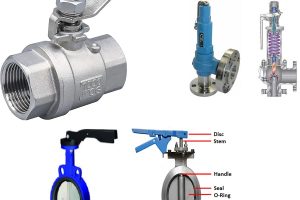Deprecated: Creation of dynamic property InsertPostAds::$settings is deprecated in /home/buzzing1/domains/buzzingpoint.com/public_html/wp-content/plugins/insert-post-ads/insert-post-ads.php on line 427
Stop loss is one of the features (risk management tools) introduced in the buy/sell page of some centralized exchanges to help limit traders’ loss in crypto trading. Some traders don’t like setting stop loss for some reasons which we will discuss later in this article. Inasmuch as stop loss orders can be a pain in the ass, it is one of the helpful tools for traders who wish to limit their loss in crypto trades, especially when trading very volatile crypto coins. Stock traders and Forex traders also use stop loss orders, and it serves the same loss-limiting purpose. But in this article, you will learn all about stop-loss, its advantages and disadvantages, and how to set stop loss orders on centralized exchanges, especially on Binance spot trading (YouTube tutorial videos included).

How Stop-Loss Orders Work?
A trader once said, “the stop price you set for your stop loss order should rather be your entry price for the trade”. Yes, to an extent, he is right, but not always right. This is because no trader can predict with certainty, the highest or lowest price any cryptocurrency can reach in a future time. Everything in crypto trading is under probability. By applying probability, you can align and be able to make some assertions, which might sometimes be correct. Stop loss orders work with the principles of probability (IF conditions or statements). Below is a typical example/idea of stop loss orders.
Assuming you bought NEAR coin at a unit price of $4, and you want to sell the coin at 30% profit, limiting any possible loss to 5%, you can apply probability (if statement) when setting your stop-loss orders as follows:
If the price of NEAR coin goes up by 30% (that is when the price rises to $5.2), sell the coin at a profit. But if the price of NEAR coin drops to 5% from my entry point (that is at a price of $3.8), sell the coin at a loss.
With this, you will never exceed a loss of 5% from your entry price even if the price of NEAR coin drops to $2 after you have bought it.
NOTE: There is another type of stop loss that can protect your profit, and at the same time limit your loss in a trade. It is called Trailing Stop Order. We will explain this in detail later in this article.
Now let’s discuss some of the advantages and disadvantages of using stop loss orders in trades.
Check:
Advantages of Setting Stop Loss Orders for a Trade
- Stop loss gives you ample opportunity to exit an unfavourable trade, at a limited loss (especially during a change in market trend). This is very helpful for short term traders. When you are not so certain that a particular trade will deliver your profit target within a short time frame, you can use stop loss to limit the maximum possible loss to tolerate, if the price of the coin goes down or dumps.
- Also, Stop loss provides the opportunity to enter another more favourable trade, once the former trade gets stopped out. So you save time and also explore more profitable trades.
- Stop-loss orders execute your buy/sell orders once any of your set criteria is met, even in your absence. Once you buy a coin, you can quickly calculate your target percentage profit and loss, and then use these calculated values as criteria when setting stop loss order for the trade. Once the market meets any of your price conditions, your sell order will execute, even in your absence. The same is applicable to buying a coin with stop loss orders (OCO).
- Stop loss orders also help you to trade without much emotions, as the set buy/sell triggers automatically when any of the set price conditions are met. This helps to limit the loss you would have made from the trade, had it been you were monitoring the price of coins manually without stop loss. So with stop loss orders, you experience less emotional stress.
- Also stop loss orders can be used as a means of maximizing profit from a trade (by trailing stop loss). To trail stop loss means to adjust your buy/sell price in such a way as to maximize your profit from the trade. In Binance, you can trail your stop loss automatically using the Trailing Stop feature.
NOTE: To trail your stop loss manually, you need to watch the market closely, and then make swift decisions, adjusting your buying/selling price and your stop price values, so as to maximize your profit from the trade.
Disadvantages of Setting Stop Loss Orders for a Trade
Stop loss orders can sometimes kick you out of a trade at a loss, and then later, the price of the coin goes up, leaving you in regrets. This phenomenon is called Stop Hunt. This is one of the reasons why some traders don’t set stop loss orders for their trades. Most times, market makers intentionally use stop hunt to flush out emotional traders out of a trade, causing panic buying.
The above is one of the major disadvantages of setting stop loss orders for a trade. But will you always risk your trading capital because of the fear of stop hunt? You shouldn’t, because at every point in time, there are tons of cryptocurrencies with good short term potentials. You just need to know how to spot these crypto gems. You can check out this guide on how to spot cryptocurrencies with powerful potentials early.
Always remember, not all crypto coins recover quickly after a certain level of price drop. Also, you need to first secure your capital before you can make profit from trades. Stop loss helps to secure your trading capital against huge loss, especially during unfavourable market conditions.
Now let’s learn how to set stop loss on Binance.
How to Set Stop Loss Orders for Spot Trades on Binance App
Stop loss is one of the features that made Binance a very popular centralized exchange. In Binance, there are 2 main types of Stop Loss features:
- OCO (One Cancels the Other) Order
- Trailing Stop Order
For OCO order, you set 2 major conditions for either a buy order or a sell order. When one of the set conditions is met, the other condition is automatically cancelled. The main aim of using OCO order is to limit your loss, but not protect your profit when the market swings.
For trailing stop order, you place a pre-set order at some specified percentage away from the current market price. The main aim of using trailing stop order is to protect your profit, and also to limit loss when the market swings.
Check out the two tutorial videos that explained how to set both OCO order and trailing stop order on Binance.
Tutorial Guides on How to Set OCO Orders for Spot Trades on Binance App
Check out this tutorial video that explained How to set OCO Orders on Binance.
How to Set Trailing Stop Orders for Trades on Binance App
Check out this tutorial guide on How to Use Spot Trailing Stop Order.
How to Use a Trailing Stop Loss (Order Types Explained)
How to Set Trailing Stop Order for Spot Trades on Binance App
Before now, trailing stop order was only available for spot trades. The good news is that it is now also available for spot trades. Spot traders can now using this helpful risk management tool to protect their profit on spot trades. Check out this YouTube tutorial video on how to set trailing stop order for spot trades on Binance app.
See:
Conclusion
You have learnt all about stop loss, advantages and disadvantages of using a stop loss order, how to place both OCO and trailing stop orders on your spot trades. Always remember that the main aim of introducing stop orders is to limit your loss in the stock or crypto market.
About the Author
Andrew Ameh is a lecturer, blockchain tech enthusiast and altcoin trader. He is the founder of 15% Trade Crew – a reliable and unique crypto trading community. He is popularly known as Mr. Stash or Wolf of AltStreet.






